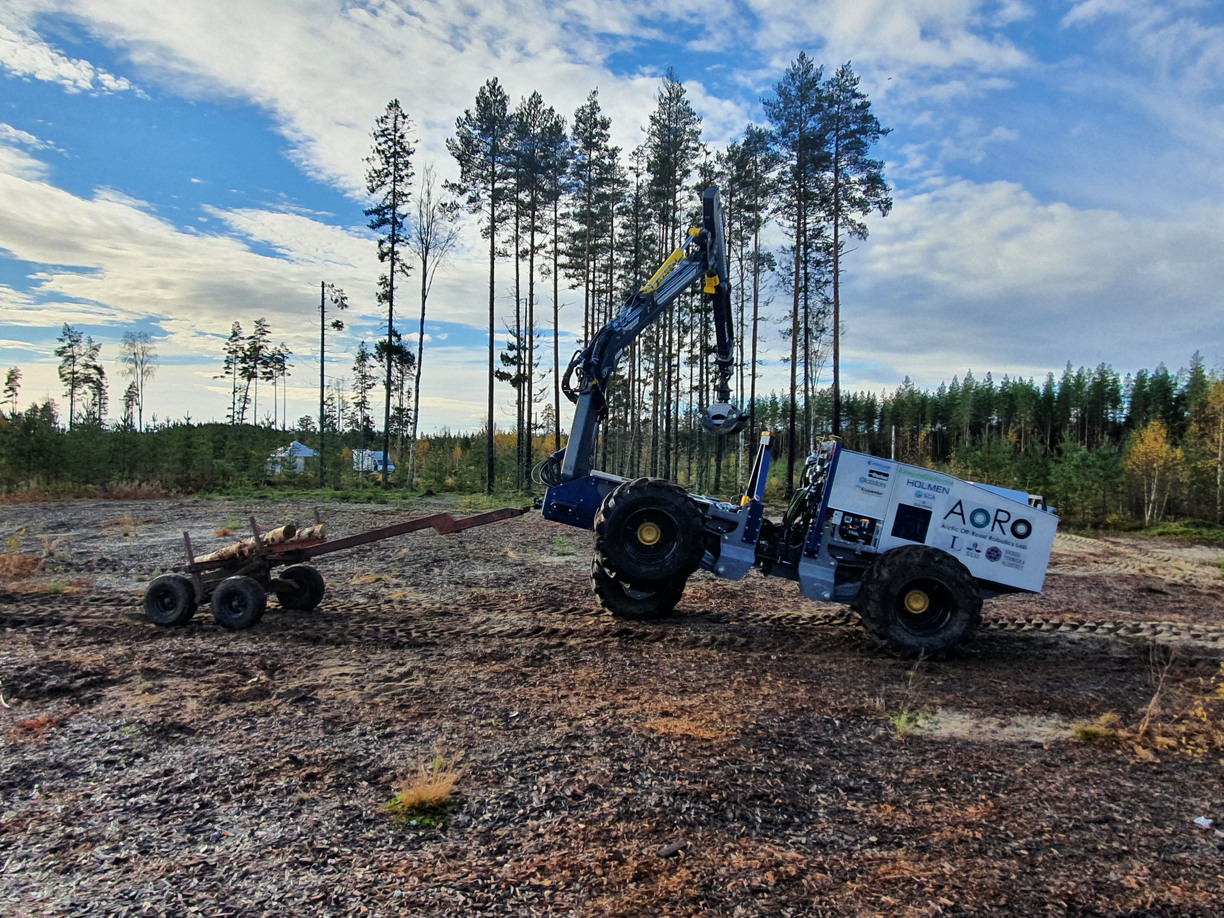
15 October 2021
First in the world with autonomous forwarding
The autonomous terrain vehicle that was designed and built at Luleå University of Technology can now also handle autonomous forwarding, ie collection and transport of round timber. It is the first time in world history that forwarding is done completely without human intervention. The researchers behind the successful trial see it as an important step towards more sustainable forestry.
− This will redraw the map for the industry and how other players in the area view operations such as these. We have worked extremely intensively with this test and it feels very nice that it actually works, says Magnus Karlberg, professor at Luleå University of Technology.
The future of forestry
The autonomous shoveling took place in Hörnefors in Västerbotten last week, in collaboration with the The Forestry Technology Cluster and the Swedish University of Agricultural Sciences.
By being programmed to perform the work on its own, the forestry machine was able to pick up and transport logs to the intended collection point. A job usually performed by forwarder drivers in machines built for the purpose, but this time the people could stand by and watch.
That a self-driving forest machine can handle such an advanced task is world-unique and opens up for major changes in the forest industry, says Magnus Karlberg.
− Even though it is still many years away, and will take place gradually, we are convinced that the technical development with smart autonomous forest machines is the future of forestry. We have shown that the technology exists, but there is of course a difference for us who look at this from a research perspective and commercial activities. We researchers can step into the future in a completely different way.
A more sustainable forestry
The development of self-propelled forest machines is also an important step for more sustainable forestry thanks to the possibility of smaller and more energy-efficient machines that can also work much more gently in forest and land.
− Today we have the opportunity to make the forest machines so smart that they can read the surroundings themselves and discover areas that are sensitive. In this way, the use can be adapted to the specific conditions that prevail on the site. An example could be that sensors on the machine detect reindeer lichen and choose other ways to spare the ground, says Magnus Karlberg.
The vision is beginning to be realized
The ten-ton machine, which is now also used in the Arctic Off-Road Robotics Laboratory, can be controlled with a remote control but is also programmed to perform work entirely on its own, as in the test with autonomous forwarding. The machine is currently powered by biodiesel and is built without a cab, but with a hydrostatic driveline, forest crane, pendulum arms and sensors. As early as 2014, researchers began sketching the machine, or off-road vehicle platform, which is a more correct name. Since then, the research team has worked to make the self-propelled vehicle as smart and robust as possible. A work that is now beginning to bear fruit.
− This would not have been possible without the expertise available at Luleå University of Technology and our partners. Thanks to hard work, our vision is now beginning to be realized. The platform would not have existed without the funding that the project has received over the years, says Magnus Karlberg and explains that the work with the forest machine is by no means over.
− We need to continue working to make the systems more robust. We now know that the platform can handle work tasks in rain, but to be implemented in industry, it is required that the machines are reliable in, for example, cold temperatures, snowfall and bad terrain.
Published:
Updated:

